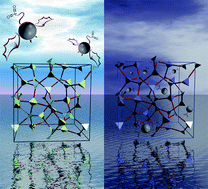For hundreds of years there have been attempts to use explosives for nefarious purposes. Unfortunately, central government can not always rely on mysterious, anonymous letters to prevent their untimely obliteration. A simple, sensitive and reliable means of detecting explosive compounds would not only have security applications; there is also a need to prevent the accidental release of explosive materials into the environment.
In a recent paper, Yuan et al. describe a three-dimensional pourous aromatic framework (PAF) with high-fluorescence quenching ability for nitro-aromatic compounds. As little as 1.5 ppm of an explosive such as TNT (2,4,6-trinitrotoluene) leads to a significant, observable decrease in luminescence intensity. Common aromatics lacking a nitro group elicit no such decrease.
The highly crystalline PAF was formed by a condensation reaction between a germanium-containing, luminescent monomer and aromatic boronic acids. The resulting polymeric framework gives the material a high fluorescence quantum yield that is easily disrupted by interactions with an analyte. The specificity for nitro-aromatics is thought to come from the attraction of electronegative nitro groups to the electron-donating PAF.
Such a sensitive material has enormous potential for use in explosives detection equipment. However, enemies of Jacobean plotters beware! This strategy might not detect gunpowder.
J. Mater. Chem., 2012, 22, 24558. DOI: 10.1039/c2jm35341e
James Serginson is a guest web writer for the Journal of Materials Chemistry blog. He currently works at Imperial College London carrying out research into nanocomposites.
To keep up-to-date with all the latest research, sign-up to our RSS feed or Table of contents alert.











